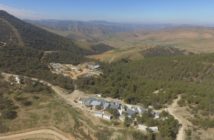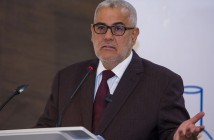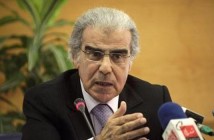LONDON — As Arab Spring turns into autumn, Western lending institutions face highly sensitive issues in their quest to support economic and social development in countries struggling to emerge from decades of stagnation.
Governments and institutions like the International Monetary Fund and the European Investment Bank have been quick to offer financial help to Egypt, Tunisia and the other Middle Eastern countries making tentative steps toward democracy.
But whatever the motive behind the offers — benevolence, wanting to bolster Western-style governance or help Western businesses expand — the traditional model used by multilateral lenders looks increasingly unsuitable for the region and difficult to implement, analysts say.
“There is a potential contradiction in that the economic model that these countries need, and that is on offer, has been discredited,” said Mark Malloch Brown, former deputy United Nations secretary general. “The liberal economic programs that these countries tended to adopt in recent years were compromised by the regimes, which enriched themselves and their friends.”
Finding an economic model to replace crony capitalism is critical to addressing the region’s other pressing problems, which include high unemployment, budget shortfalls, high inflation, and a lack of investment.
The I.M.F. estimates that Egypt, Jordan, Lebanon, Morocco, Syria and Tunisia all have unemployment rates of about 11 percent, barely changed over the past two decades. Youth unemployment on average exceeds 40 percent.
Egypt, Yemen, Tunisia and Syria are likely to experience recession this year as economic activity contracts following the uprisings, the Institute of International Finance said recently.
An I.M.F report in May said the external financing needs of oil-importing Middle East and North African countries would exceed $160 billion over the next three years.
This month leaders of the Group of 8 industrialized nations pledged $38 billion in new aid to help underpin the transition to democracy amid complaints that little of a $20 billion aid package promised in May had materialized. Cash-rich Arab states like Qatar, Kuwait and Saudi Arabia have also offered billions, as well as increasing their own spending to try to head off domestic unrest.
In a research report this month, Jean-Michel Saliba of Bank of America Merrill Lynch estimated that the oil-rich Gulf nations would spend $150 billion to accommodate domestic social pressures and in intra-regional fiscal transfers.
The I.M.F. has said it could provide $35 billion in loans to the region, and the World Bank in May announced plans to lend $6 billion over two years to Egypt and Tunisia.
Alongside the Gulf States, Europe may have a central role: It accounts for more than three-quarters of Tunisia’s exports of goods, tourism receipts, workers’ remittances and investment.
One tool of support would be the European Investment Bank, which has a mission to support stability and nation-building in the Union’s partner countries. At the start of the summer, Union members agreed that the EI.B. could increase lending to the Middle East in a process expected to be ratified soon. That would give the bank nearly €6 billion in financing available for the region until 2013.
Over the summer, the E.I.B signed a €163 million loan to support road upgrades in Tunisia and a €140 million loan to help the Tunisian Chemicals Group, a major phosphates producer, build a fertilizer plant.
Egypt is to receive about half of its funds for the region, followed by Morocco, Tunisia and Jordan. The European Union is also offering Libya access to E.I.B. loans, should a new government seek assistance.
Another vehicle will be the European Bank for Reconstruction and Development, established in 1991 to help countries in Eastern Europe and the former Soviet Union make the transition to market economies and multi-party rule following the collapse of communism.
In July, its board approved expanding into the Middle East, part of a process that could see it lend €2.5 billion in the region annually. An initial fund could start lending to Egypt next spring, focusing on agriculture, manufacturing, municipal services, urban transport and banks. The aim would be to draw in private investors to share risk.
In a similar way, the World Bank’s private-sector investment arm, the International Financial Corp., is also mobilizing.
It has worked in the region since the 1960s. Lars H. Thunell, its chief executive, estimates the I.F.C. will invest about $7 billion in the region over the next three years.
But despite these efforts, the response from the region has been mixed
Much like South Africa in the aftermath of apartheid, Egypt appears wary of the motives behind the offers.
“Egypt has been allocated $17.5 billion by different pledges and commitments,” said Gouda Adbel-Khalek, the Egyptian minister for solidarity and social justice. “Very little has materialized and lots of it is propaganda. Everyone is jockeying for position and trying to promote their own interests.”
Part of the issue appears to be fear of being associated with lenders or policies linked to the West or the previous regimes. In Tunisia, for example, as late as September 2010, the I.M.F. was still lauding “sound macroeconomic management and structural reforms” of the regime of President Zine al-Abidine Ben Ali. And the fund called for unpopular policies of containing public spending on wages, food and fuel subsidies.
In June, Egypt’s transitional rulers on the Supreme Council of the Armed Forces canceled plans to borrow $3 billion from the I.M.F. as well as fresh loans from the World Bank, arguing that the government had already trimmed its budget deficit. The council indicated that the loan conditions would have violated sovereignty, and it may have feared an outcry against the potentially restrictive terms. There is also a fear of handing yet more debt to the next generation.
Europeans in particular will have to tread carefully with the new governments, having signed partnership deals
LONDON — As Arab Spring turns into autumn, Western lending institutions face highly sensitive issues in their quest to support economic and social development in countries struggling to emerge from decades of stagnation.
Governments and institutions like the International Monetary Fund and the European Investment Bank have been quick to offer financial help to Egypt, Tunisia and the other Middle Eastern countries making tentative steps toward democracy.
But whatever the motive behind the offers — benevolence, wanting to bolster Western-style governance or help Western businesses expand — the traditional model used by multilateral lenders looks increasingly unsuitable for the region and difficult to implement, analysts say.
“There is a potential contradiction in that the economic model that these countries need, and that is on offer, has been discredited,” said Mark Malloch Brown, former deputy United Nations secretary general. “The liberal economic programs that these countries tended to adopt in recent years were compromised by the regimes, which enriched themselves and their friends.”
Finding an economic model to replace crony capitalism is critical to addressing the region’s other pressing problems, which include high unemployment, budget shortfalls, high inflation, and a lack of investment.
The I.M.F. estimates that Egypt, Jordan, Lebanon, Morocco, Syria and Tunisia all have unemployment rates of about 11 percent, barely changed over the past two decades. Youth unemployment on average exceeds 40 percent.
Egypt, Yemen, Tunisia and Syria are likely to experience recession this year as economic activity contracts following the uprisings, the Institute of International Finance said recently.
An I.M.F report in May said the external financing needs of oil-importing Middle East and North African countries would exceed $160 billion over the next three years.
This month leaders of the Group of 8 industrialized nations pledged $38 billion in new aid to help underpin the transition to democracy amid complaints that little of a $20 billion aid package promised in May had materialized. Cash-rich Arab states like Qatar, Kuwait and Saudi Arabia have also offered billions, as well as increasing their own spending to try to head off domestic unrest.
The I.M.F. has said it could provide $35 billion in loans to the region, and the World Bank in May announced plans to lend $6 billion over two years to Egypt and Tunisia.
Alongside the Gulf States, Europe may have a central role: It accounts for more than three-quarters of Tunisia’s exports of goods, tourism receipts, workers’ remittances and investment.
One tool of support would be the European Investment Bank, which has a mission to support stability and nation-building in the Union’s partner countries. At the start of the summer, Union members agreed that the E.I.B. could increase lending to the Middle East in a process expected to be ratified soon. That would give the bank nearly €6 billion in financing available for the region until 2013.
Over the summer, the E.I.B signed a €163 million loan to support road upgrades in Tunisia and a €140 million loan to help the Tunisian Chemicals Group, a major phosphates producer, build a fertilizer plant.
Egypt is to receive about half of its funds for the region, followed by Morocco, Tunisia and Jordan. The European Union is also offering Libya access to E.I.B. loans, should a new government seek assistance.
Another vehicle will be the European Bank for Reconstruction and Development, established in 1991 to help countries in Eastern Europe and the former Soviet Union make the transition to market economies and multi-party rule following the collapse of communism.
In July, its board approved expanding into the Middle East, part of a process that could see it lend €2.5 billion in the region annually. An initial fund could start lending to Egypt next spring, focusing on agriculture, manufacturing, municipal services, urban transport and banks. The aim would be to draw in private investors to share risk.
In a similar way, the World Bank’s private-sector investment arm, the International Financial Corp., is also mobilizing.
It has worked in the region since the 1960s. Lars H. Thunell, its chief executive, estimates the I.F.C. will invest about $7 billion in the region over the next three years.
But despite these efforts, the response from the region has been mixed.
Much like South Africa in the aftermath of apartheid, Egypt appears wary of the motives behind the offers.
“Egypt has been allocated $17.5 billion by different pledges and commitments,” said Gouda Adbel-Khalek, the Egyptian minister for solidarity and social justice. “Very little has materialized and lots of it is propaganda. Everyone is jockeying for position and trying to promote their own interests.”
Part of the issue appears to be fear of being associated with lenders or policies linked to the West or the previous regimes. In Tunisia, for example, as late as September 2010, the I.M.F. was still lauding “sound macroeconomic management and structural reforms” of the regime of President Zine al-Abidine Ben Ali. And the fund called for unpopular policies of containing public spending on wages, food and fuel subsidies.
Europeans in particular will have to tread carefully with the new governments, having signed partnership deals






